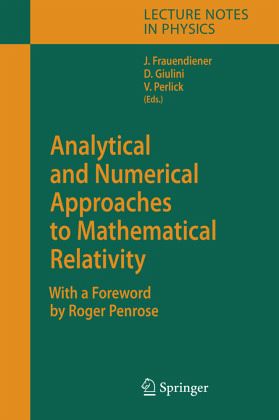Nicht lieferbar

Analytical and Numerical Approaches to Mathematical Relativity
Versandkostenfrei!
Nicht lieferbar
Today, general relativity rates among the most accurately tested fundamental theories in all of physics. However, deficiencies in our mathematical and conceptual understanding still exist, and these partly hamper further progress. For this reason alone, but no less important from the point of view that a theory-based prediction should be regarded as no better than one's own structural understanding of the underlying theory, one should undertake serious investigations into the corresponding mathematical issues. This book contains a representative collection of surveys by experts in mathematical relativity writing about the current status of, and problems in, their fields. There are four contributions for each of the following mathematical areas: differential geometry and differential topology, analytical methods and differential equations, and numerical methods. This book addresses graduate students and specialist researchers alike.
The general theory of relativity, as formulated by Albert Einstein in 1915, provided an astoundingly original perspective on the physical nature of gr- itation, showing that it could be understood as a feature of a curvature in the four-dimensional continuum of space-time. Now, some 90 years later, this extraordinary theory stands in superb agreement with observation, prov- ing a profound accord between the theory and the actual physical behavior of astronomical bodies, which sometimes attains a phenomenal precision (in one case to about one part in one hundred million million, where several d- ferent non-Newtonian e?ects, including the emission of gravitational waves, are convincingly con?rmed). Einstein's tentative introduction, in 1917, of an additional term in his equations, speci?ed by a "cosmological constant", - pearsnowtobeobservationallydemanded,andwiththistermincluded,there is no discrepancy known between Einstein's theory and classical dynamical behavior, from meteors to matter distributions at the largest cosmological scales. One of Einstein's famous theoretical predictions that light is bent in a gravitational ?eld (which had been only roughly con?rmed by Eddington's solareclipsemeasurementsattheIslandofPrincipein1919,butwhichisnow very well established) has become an important tool in observational cosm- ogy, where gravitational lensing now provides a unique and direct means of measuring the mass of very distant objects.



